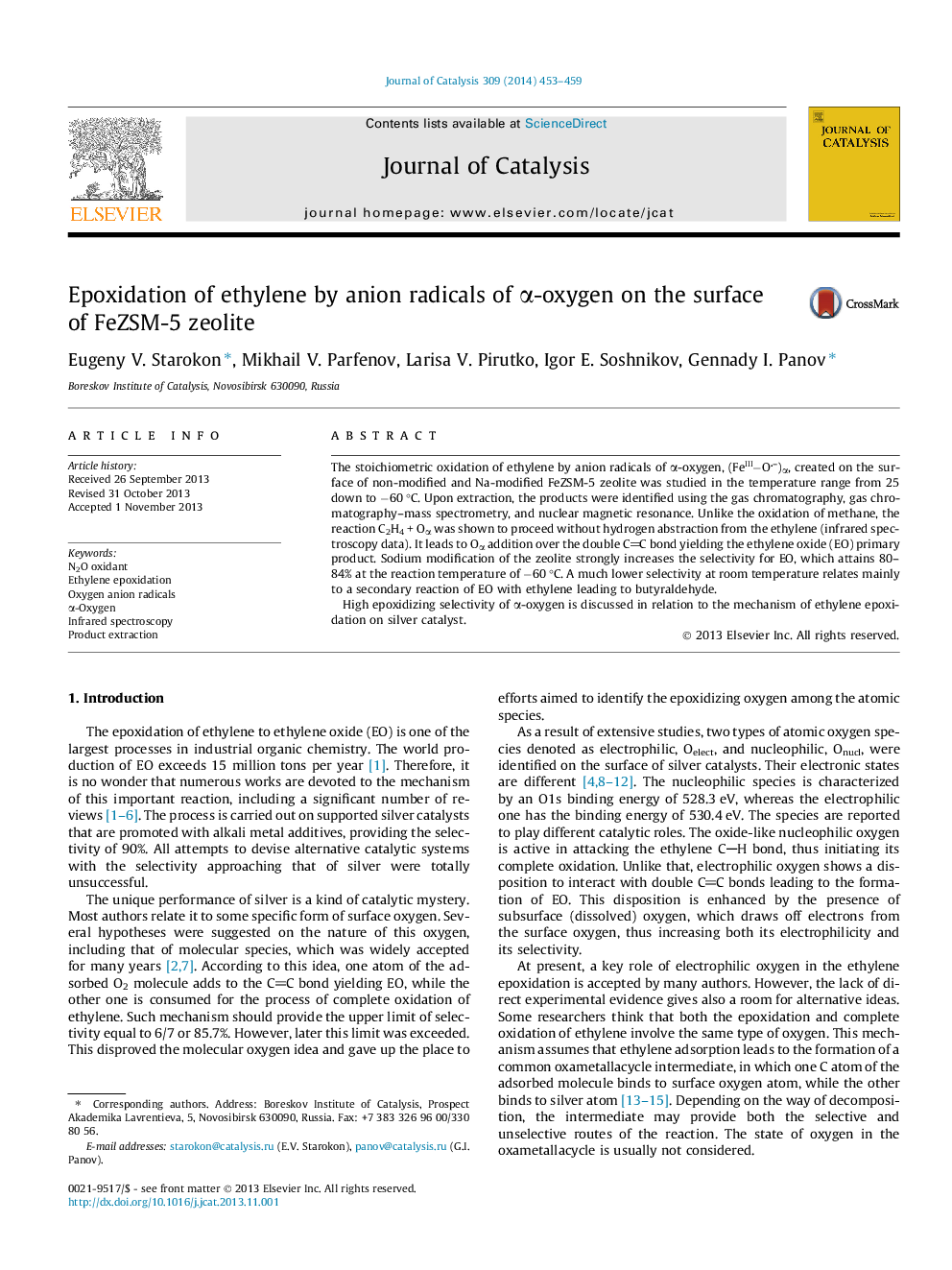| Article ID | Journal | Published Year | Pages | File Type |
|---|---|---|---|---|
| 61135 | Journal of Catalysis | 2014 | 7 Pages |
•Ethylene oxidation by Oα on FeZSM-5 surface was studied at temperatures −60 to +25 °C.•No hydrogen abstraction from the ethylene takes place at the reaction.•Oα adds selectively over CC bond to form the ethylene oxide (EO) primary product.•At the reaction temperature of −60 °C, the EO selectivity attains 84%.
The stoichiometric oxidation of ethylene by anion radicals of α-oxygen, (FeIII−O–)α, created on the surface of non-modified and Na-modified FeZSM-5 zeolite was studied in the temperature range from 25 down to −60 °C. Upon extraction, the products were identified using the gas chromatography, gas chromatography–mass spectrometry, and nuclear magnetic resonance. Unlike the oxidation of methane, the reaction С2Н4 + Oα was shown to proceed without hydrogen abstraction from the ethylene (infrared spectroscopy data). It leads to Oα addition over the double CC bond yielding the ethylene oxide (EO) primary product. Sodium modification of the zeolite strongly increases the selectivity for EO, which attains 80–84% at the reaction temperature of −60 °C. A much lower selectivity at room temperature relates mainly to a secondary reaction of EO with ethylene leading to butyraldehyde.High epoxidizing selectivity of α-oxygen is discussed in relation to the mechanism of ethylene epoxidation on silver catalyst.
Graphical abstractEthylene oxide extracted from the surface was shown to be the primary reaction product. The zeolite modification by sodium strongly increases the selectivity, which attains 84% at the reaction temperature of −60 °C.Figure optionsDownload full-size imageDownload high-quality image (111 K)Download as PowerPoint slide
